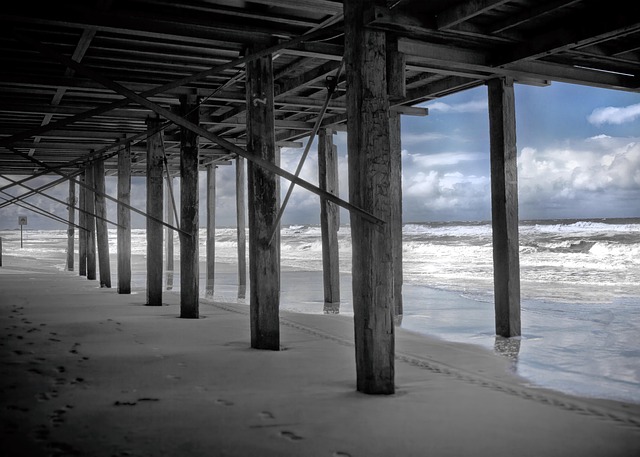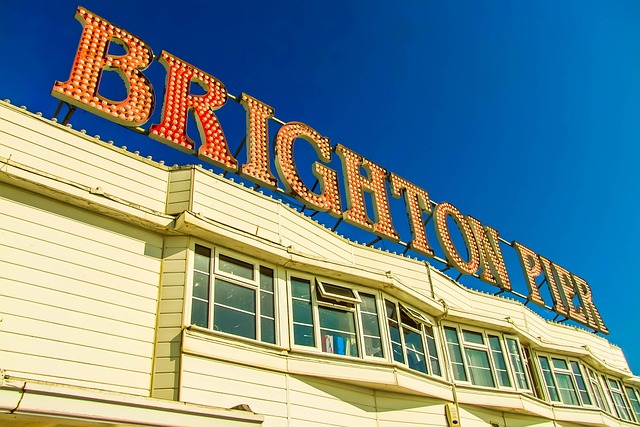Pier installation is a critical process for maintaining structural integrity and safety by addressing foundation unevenness caused by weather conditions and soil settling. This solution, involving strategically placing supports beneath the foundation, is ideal for homes on unstable soil or experiencing settlement. Pier installation offers minimal disruption, customization to various soil conditions, superior strength, and longevity, making it a preferred method for older homes with settling foundations. Homeowners should be vigilant about signs of foundation issues like cracks, uneven doors, and slanted walls. The process involves correcting vertical alignment through various piering systems tailored to specific needs and soil conditions. After installation, regular inspections, proper drainage maintenance, and clearings around piers are crucial for long-term stability. Costs range from $3,000 to $7,000 on average, with multiple estimates recommended for financial planning.
“Discover the transformative power of house leveling and structural repair, essential practices for ensuring your home’s longevity. This comprehensive guide delves into critical aspects, starting with identifying signs of foundation problems—a key indicator prompting action. Learn how pier installation plays a pivotal role in stabilizing structures, exploring various piering systems and their applications. We’ll walk you through the step-by-step process, cost considerations, and post-piering maintenance tips, empowering you to make informed decisions for your home’s future.”
Understanding House Leveling: When and Why It's Necessary

House leveling is a critical process that ensures your home remains structurally sound and safe. It involves adjusting the foundation to bring it back to its original level, addressing any unevenness or sinking that may have occurred over time. This is particularly important in regions with varying weather conditions, as extreme temperatures and precipitation can cause settling and shifting of the soil beneath a house, leading to structural damage if left unaddressed.
When a home’s foundation becomes uneven, it can result in a range of issues, from cracks in walls and floors to doors that stick or don’t close properly. In severe cases, an unbalanced structure might even pose a risk of collapse. Pier installation is one of the most common solutions for house leveling, involving the strategic placement of supports beneath the foundation to stabilize and level it. This method is particularly effective for homes built on unstable soil or those experiencing soil settlement due to environmental factors.
The Role of Pier Installation in Structural Repair

When it comes to structural repair, pier installation is a highly effective and durable solution for leveling and supporting uneven or sinking floors. These metal or concrete structures are designed to bear the weight of the building, redistributing it evenly across a broader base. This process is particularly useful in older homes with settling foundations, as it can prevent further damage and ensure structural integrity.
Pier Installation offers several advantages. It allows for minimal disruption during the repair process, making it an ideal choice for homes with limited access or where maintaining aesthetics is crucial. Additionally, these piers can be tailored to various soil conditions, ensuring stability regardless of the underlying terrain. This customization, combined with their strength and longevity, makes pier installation a preferred method in the structural repair industry.
Identifying Signs of Foundation Problems

Many homeowners often overlook subtle signs of foundation problems until they’ve caused significant structural damage. Keep an eye out for these red flags to ensure your home’s longevity and safety: cracks in walls or floors, uneven doors or windows, sticking or misaligning doors, and slanted or distorted walls. These issues could indicate a compromised foundation, which might require professional intervention.
One common solution to address these problems is pier installation. Piers are structural supports that can be driven into the ground to stabilize and level an uneven foundation. This method is particularly effective for homes with settling or shifting soil conditions. By reinforcing the foundation, pier installation prevents further damage and ensures a solid base for your home.
Types of Piering Systems and Their Applications

House leveling involves correcting the vertical alignment of structures that have settled or sunk unevenly over time. One effective method to achieve this is through piering systems, which act as a foundation support by lifting and stabilizing the building. There are several types of piering systems available, each with unique applications depending on the specific structural needs and soil conditions.
Some common types include concrete piles, steel beams, and helical piers. Concrete piles are deep, cylindrical columns that provide strong, long-lasting support for structures in various soil types. Steel beam piers are ideal for heavier structures and offer flexibility in terms of placement and design. Helical piers, on the other hand, are screw-like devices driven into the ground and are particularly useful in areas with soft or unstable soils. The choice of piering system depends on factors such as the degree of settlement, soil composition, and the structural load requirements, ensuring a stable and secure foundation for homes.
Step-by-Step Process of Pier Installation

The process of pier installation is a meticulous and crucial step in house leveling and structural repair, especially for properties with settling or uneven foundations. It involves strategically placing and reinforcing support columns, known as piers, to stabilize and elevate the structure. The first step is an extensive site assessment, where experts examine the damage and determine the best location for piers. This analysis ensures that the installation aligns with the specific needs of the property.
Next, holes are drilled at the identified locations, often deep into the soil or bedrock, to accommodate the pier caps and steel beams. After careful preparation, concrete is poured to set the piers in place, providing a solid foundation for the subsequent structural work. Once the concrete sets, specialized equipment raises the house, carefully positioning it onto the new support system of piers. This meticulous step-by-step approach ensures that the structure is stabilized, reducing future settling and protecting the integrity of the building.
Cost Considerations for House Leveling and Structural Repairs

When considering house leveling and structural repairs, cost is a significant factor that homeowners must take into account. The expense can vary greatly depending on the extent of the damage and the type of repair needed. For instance, pier installation, a common method to stabilize and level uneven foundations, can range from a few thousand dollars to tens of thousands, with average costs sitting around $3,000 to $7,000. This procedure involves installing support piers beneath the house to distribute weight evenly and alleviate settling issues.
Other structural repairs, such as replacing damaged beams or walls, re-roofing, or reinforcing foundations, will also have varying costs. It’s crucial for homeowners to obtain multiple estimates from reputable contractors to understand the financial commitment required. Additionally, factors like location, local labor rates, and the complexity of the work can influence pricing, making it essential to research and plan accordingly before initiating any repair project.
Ensuring Long-Term Stability: Maintenance Tips After Piering

After completing pier installation, proper maintenance is key to ensuring long-term stability for your home. Regular inspection and upkeep are essential, especially in identifying any potential issues early on. One crucial step is to regularly check for signs of settlement or shifting around the piers. This includes visual examinations and, if necessary, non-invasive testing methods like laser scanning or ground radar to assess the foundation’s integrity.
Additionally, maintaining proper drainage around your home is vital. Ensure that downspouts are properly connected and direct rainwater away from the foundation. Regularly clearing debris from gutters and drains will prevent water accumulation, which can weaken the structure over time. Another important tip is to keep the area around piers clear of vegetation, as roots can cause damage or disruption to the support system, compromising stability.
